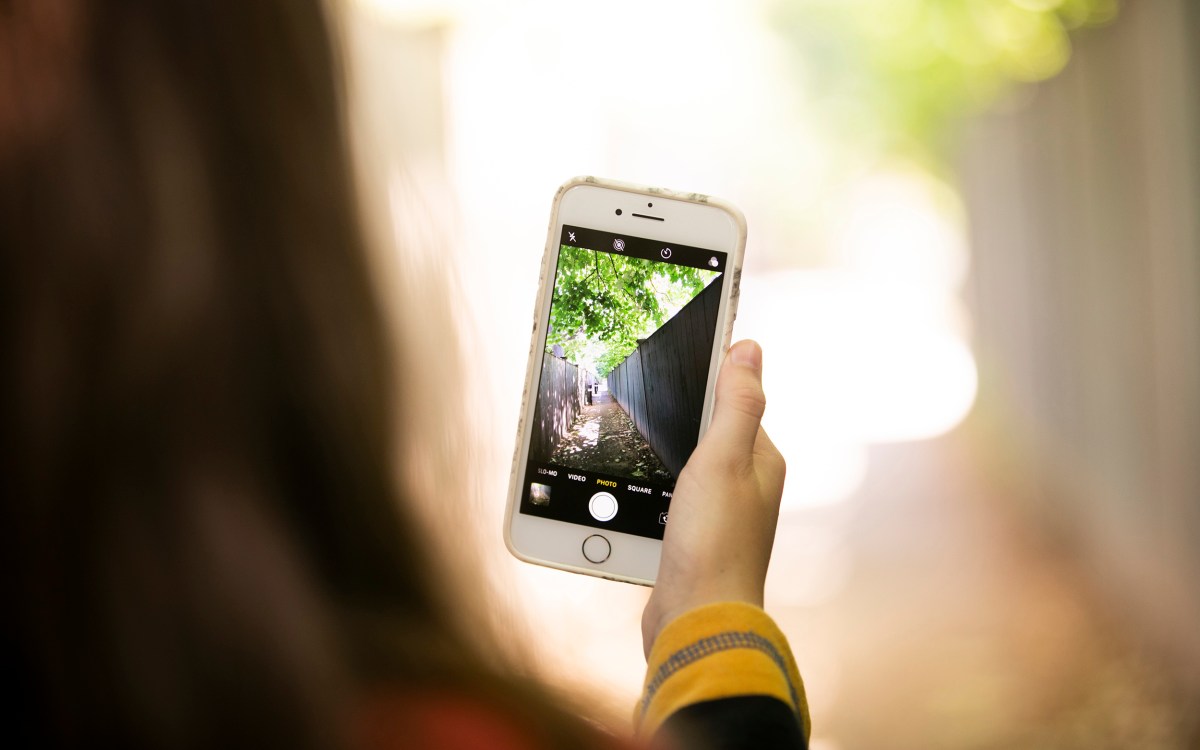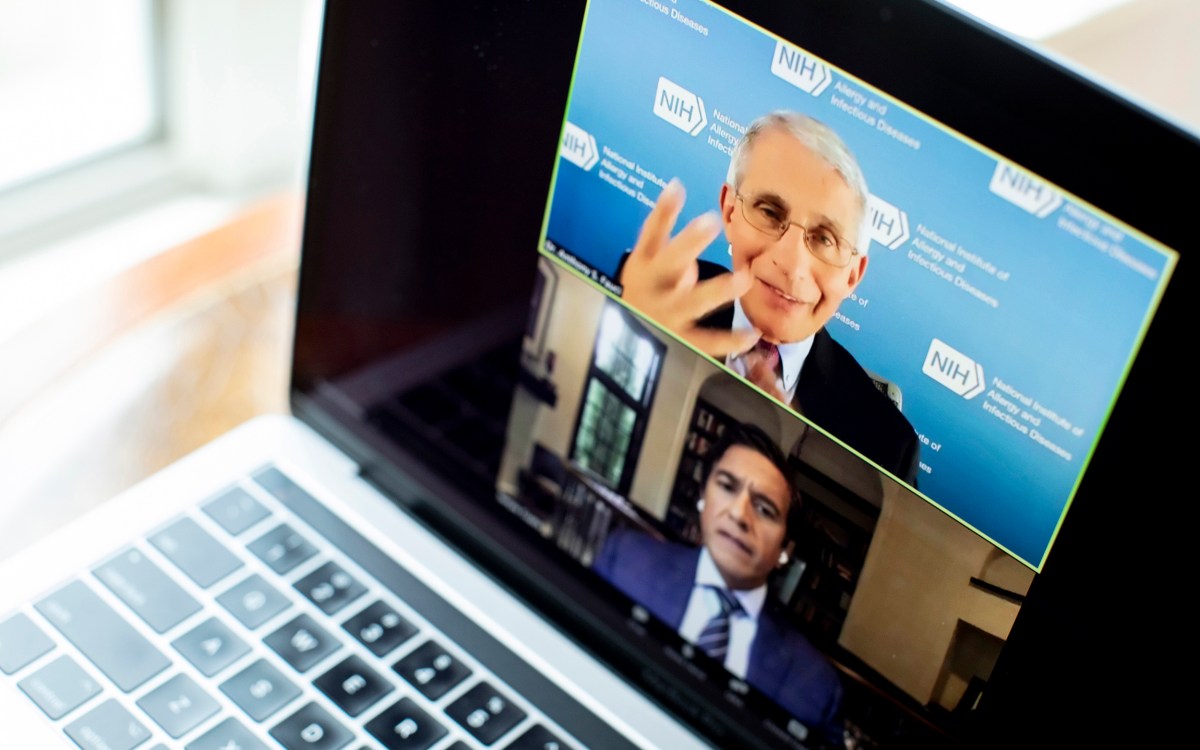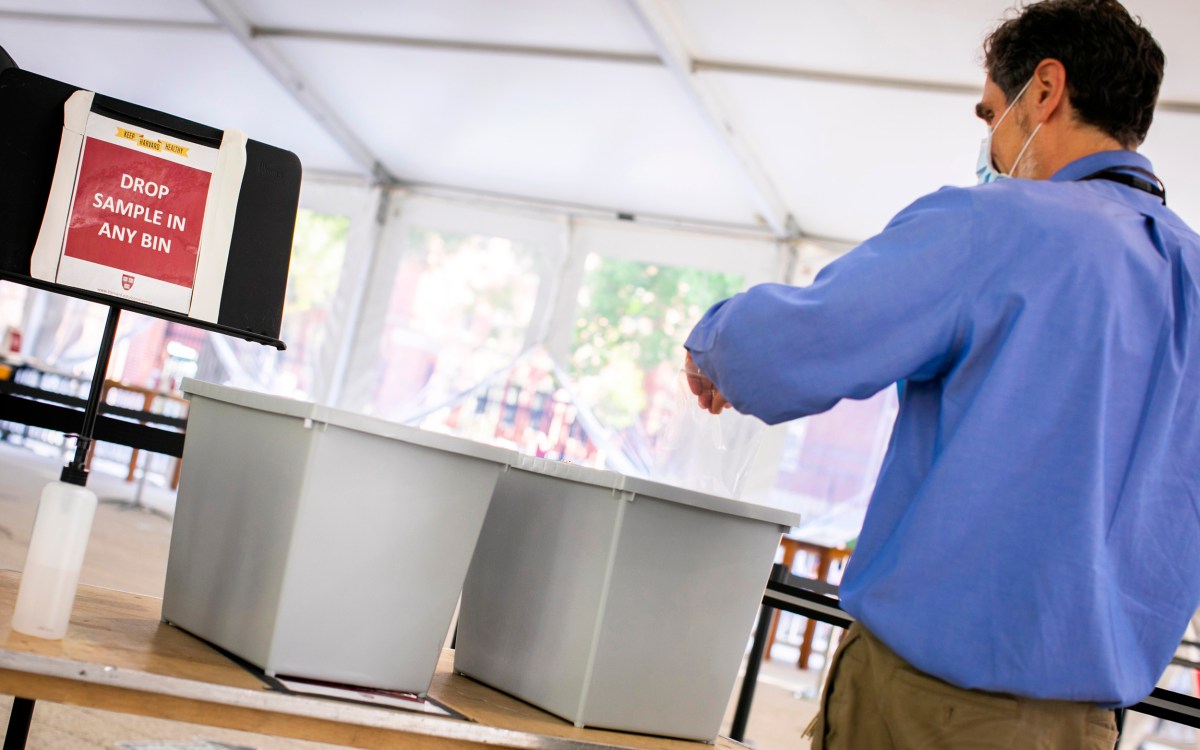Video: Justin Saglio/Harvard Staff
Inside Harvard’s COVID tracing effort
Team of 8 works to identify and isolate the infected and those who’ve had close contact with them
Angela Sigal Poock helped one patient get a letter excusing that person from work and aided another in figuring out grocery deliveries. But the COVID-19 contact tracer really spends most of her time just listening.
“Some people were really emotional,” she said. “I’ve been on the phone for a while with them to just get over the fact that, yes, they are positive and then give them a minute to adjust because they have to leave work or they have to leave class. It’s a big deal, and I think that starting from that is really important, and then you get into all the questions about contacts and whatnot.”
A registered nurse with Harvard University Health Services (HUHS), Poock is part of the eight-person group that identifies and tracks everyone in the University community who tests positive for the novel coronavirus or has had close contact with someone who has. The idea is to isolate the positive cases quickly, break the chain of infection, and stop potential outbreaks.
“It’s a lot of work. It’s time consuming and whatnot, but to me, personally, I want to help the community stay healthy. That is my big role,” said Poock. “If you keep one person healthy, then their contacts can be healthy, and they can keep others healthy. It’s almost like a domino effect.”
Contact tracing is part of Harvard’s plan for a phased reopening of on-campus activities such as labs, and academic and residential life. In many ways, it is a last line of defense in case that other COVID safety measures such as high-cadence testing, mask wearing, and social distancing falter.
“If you can remove people from the community while they’re infectious and identify those close contacts and do the same thing, you’re [essentially] reducing all of that opportunity to spread the virus over the timeframe,” said Jonathan Mills, HUHS director of health care quality and patient safety. “It really can squash that amplification possibility.”

More like this
Mills heads the contact-tracing team, which includes four nurses who were hired for the project and three others such as Poock who were already working at HUHS and agreed to dedicate a block of time to the task.
Everyone in the group has been through the Johns Hopkins University contact tracing course and received additional training at HUHS. The team also has been trained on how to add patient information into the Massachusetts Virtual Epidemiologic Network, an infectious-disease database that helps monitor the spread of infection. And they monitor Harvard’s self-reporting platforms, Crimson Clear and Color, for notification on positive cases.
So far, the campaign has been highly efficient.
“Because of the way we’re set up and [because] we’re monitoring from around 8 a.m. to midnight, seven days a week, we are basically able to — I would say within an hour — get in touch with the case once we get the positive test,” Mills said.
Besides contacting individuals who test positive, tracers also track down those who may have been exposed to an infected person, meaning they were within six feet of them for 15 minutes or more, per Centers for Disease Control guidelines.
Both steps involve phone interviews, which usually last 20 to 30 minutes. Working from a script, the tracer informs people that they tested positive or have been exposed to the virus. They are then asked to isolate and seek tests, if needed. The tracer lets them know what resources are available, tells them best practices on isolation, tries to help them work around logistical problems, and makes sure they have what they need.
The initial call from contact tracers is followed by daily monitoring, recording temperatures, and attesting to evolving symptoms. That initial call also involves helping those who test positive recall their movements from when they first developed symptoms, or two days from the positive test if they have no symptoms. That helps the tracer to develop a list of those who need to be informed that they may have been exposed.
A lot of the conversations are simply educating people on what comes next.
“I’d say the bulk of the 20 or 30 minutes with both the case and the close contact is doing that very specific thing,” Mills said. “If anyone has specific questions about next steps or the virus itself, we’ll simply answer during the call. And if we don’t know the answer, we will find out and close the loop with them.”
Students who live in a dorm and test positive are moved into isolation housing. Those from the Business School and Law School isolate in their own bedrooms and access to their own bathrooms. Students who are quarantining because they came into contact with someone who tested positive stay in their rooms. Staff and students who live off-campus are asked to isolate and quarantine in place.
Poock said a big portion of her job is reassuring patients and building ties. But her favorite part is when she gets to discharge them from quarantine. She gave two people that good news recently.
“Their reaction was like, ‘Really, you’re not going to call me anymore? You’re not going to follow up with me? But I got so used to you because you’ve been calling me for the past few days. You’re like part of my family because you always ask about things, and it makes me feel so much better,’ ” Poock said.
“It’s why we do this,” she added.









